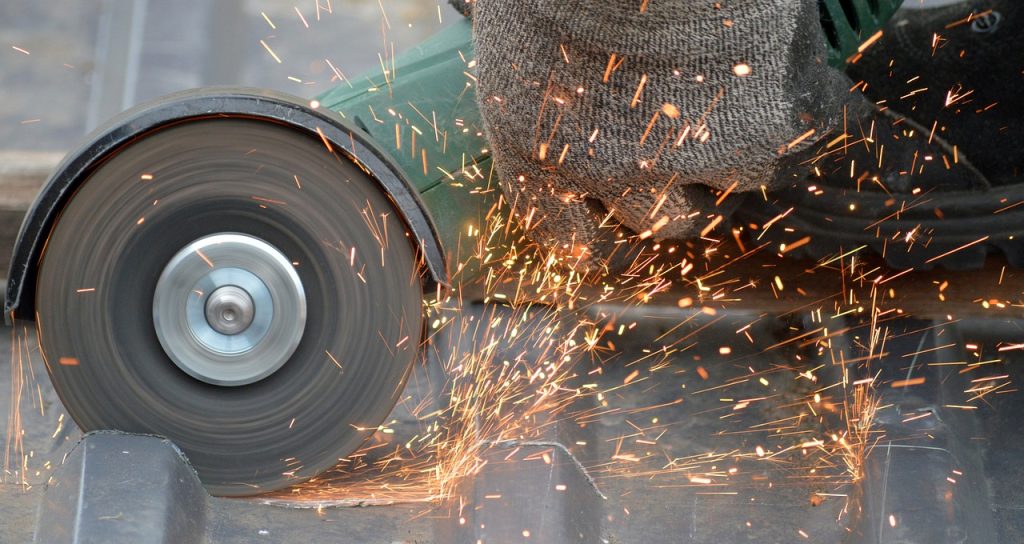When it comes to cutting metal, the angle grinder remains one of the most versatile and powerful tools in any professional or DIY enthusiast’s workshop. From slicing through rebar to shaping sheet metal, this handheld powerhouse delivers precision and speed. But using an angle grinder efficiently and safely requires the right techniques.
In this article, we’ll break down the top 5 metal cutting techniques that can help you get professional-grade results every time. Whether you’re a fabricator, welder, or weekend project warrior, these methods will enhance your skill, extend the life of your tools, and ensure cleaner, more accurate cuts.
1. Straight Cutting Technique (For Pipes, Rods, and Rebars)
The most common and straightforward way to use an angle grinder is for straight cuts through metal rods, bars, and pipes.
This method is ideal for construction work, automotive repairs, and metal fabrication.
How to Do It:
- Mark the cut line with chalk or a marker.
- Secure the metal piece firmly in a vise or clamp to prevent vibration.
- Attach a thin cutting disc (1.0mm–1.6mm) designed for metal.
- Hold the grinder with both hands, align the wheel to the cut mark, and start cutting slowly and steadily.
- Apply light pressure—let the disc do the work. Forcing it may cause overheating or kickback.
Pro Tip:
To minimize burrs, avoid twisting the grinder at the end of the cut. A steady, linear motion ensures a smoother finish.
2. Plunge Cutting Technique (For Slots and Openings in Sheet Metal)
Plunge cutting is used when you need to start cutting from the middle of a metal sheet rather than from the edge—perfect for creating vents, slots, or access holes.
How to Do It:
- Fit a cutting disc suitable for thin metal sheets.
- Hold the grinder firmly and position it at a slight angle to the surface.
- Start the grinder and gently lower the disc into the metal at the desired starting point.
- Once the disc penetrates, level it out and continue cutting along your guideline.
Safety Reminder:
Always wear eye protection and gloves—metal sparks can easily bounce back during plunge cuts.
3. Angle Cutting Technique (For Bevels and Edge Preparation)
When welding or joining metal parts, you’ll often need to bevel edges for a stronger weld joint. The angle grinder excels at this when used with precision.
How to Do It:
- Switch to a flap disc or grinding disc.
- Hold the grinder at a 30°–45° angle relative to the metal surface.
- Move the grinder smoothly along the edge, removing small layers until you achieve the desired bevel depth.
Applications:
- Preparing steel plates for welding
- Cleaning up torch-cut edges
- Creating smooth chamfers on sheet metal
Pro Tip:
Keep your movements consistent. Uneven pressure can cause wavy bevels and weaken weld joints.
4. Circular or Curved Cutting Technique (For Shaping and Design Work)
For more advanced users, the curved cutting technique allows shaping of complex metal pieces, such as brackets, ornamental designs, or automotive parts.
How to Do It:
- Use a small-diameter cutting wheel (4-inch or less) for better control.
- Draw your cutting outline on the metal surface.
- Begin cutting slowly, following the curve with short, controlled passes.
- Avoid trying to complete tight curves in one pass—work gradually.
Pro Tip:
Switch to a grinding or sanding disc afterward to refine the curve and remove any sharp edges.
5. Precision Cutting Technique (Using Cutting Guides and Jigs)
When accuracy is crucial—especially for fabrication, cabinetry, or engineering applications—the precision cutting technique is the way to go.
How to Do It:
- Mount your metal piece on a stable surface.
- Use a cutting guide, straight edge, or metal jig to keep the grinder aligned.
- Maintain consistent pressure and cutting speed.
- For repeated identical cuts, use clamps or templates to ensure uniformity.
Pro Tip:
If you’re cutting stainless steel or aluminum, use a dedicated cutting wheel to prevent contamination or material discoloration.
Essential Safety Tips for Metal Cutting with an Angle Grinder
Even though the angle grinder is incredibly useful, it can also be dangerous if misused. Follow these safety rules:
- Always wear safety goggles, gloves, and a face shield.
- Keep a firm two-hand grip on the grinder at all times.
- Allow the disc to reach full speed before making contact with the metal.
- Avoid cutting near flammable materials—sparks can ignite them easily.
- Check discs regularly for cracks or wear before use.
Choosing the Right Cutting Disc
Not all cutting discs are made equal. Here’s a quick comparison:
| Disc Type | Material Best For | Advantages |
|---|---|---|
| Thin Cut-Off Wheel (1mm) | Sheet metal, pipes | Fast and clean cuts |
| Reinforced Disc | Structural steel | Added strength, longer life |
| Flap Disc | Beveling, deburring | Smooth finish |
| Diamond Disc | Stainless steel, thick metal | Durable, precise |
Always check the disc’s RPM rating against your grinder’s speed to avoid damage or accidents.
Final Thoughts
Mastering the art of metal cutting with an angle grinder takes practice—but once you get the feel, it opens up a world of precision and efficiency.
Whether you’re building a metal gate, repairing machinery, or creating custom art pieces, the techniques above will help you cut cleaner, safer, and faster.
So next time you fire up your grinder, remember: it’s not just about the tool—it’s about the technique. With the right approach, your angle grinder becomes a metal-cutting machine that rivals professional-grade equipment.



